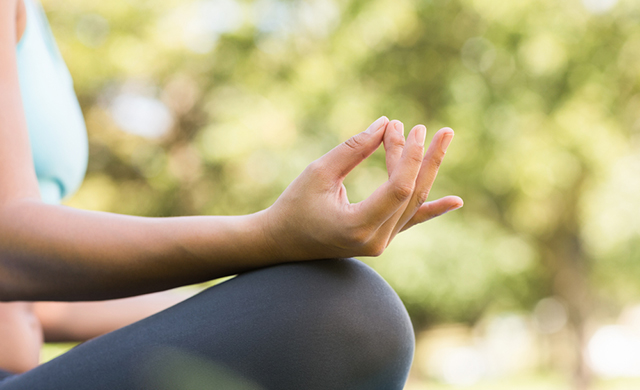
7 Ways To Use Meditation For Anxiety Relief
12/19/2018 06:00AM | 5028 viewsBy Elizabeth Bacharach
Anxious thoughts are (arguably) the least pleasant kinds of thoughts—and as soon as they pop up, your main goal is to get them gone (which, honestly, only seems to make them multiply).
Real talk: You can't necessarily stop yourself from ever having them...but you can learn how to manage them (and prevent them from going rogue)—that's where meditation comes into play.
Meditation can actually teach you how to recognize anxiety-inducing thoughts, observe them, and then let them go. Basically, you're learning to recognize and respond to your feelings rather than instantly reacting to them, says Andy Puddicombe, meditation and mindfulness expert and co-founder of the meditation app Headspace. (Want to try Headspace? Click here and use the code PRHearst1M for a one-month free trial, or code HEARST for three months free on a year-long subscription.)
Still, it can be hard to know where to start—and, uh, what to do when you're actually feeling anxious. Try one of these seven quick meditation tips for anxiety to help bring yourself back to reality ASAP.
1. Focus on the rising and falling of your breath.
With your hand on your stomach, focus on your breath as you inhale and exhale. Count your breaths—"one" on the rise, "two" on the fall—as you pay attention to the movement of your body, to bring you back to the present moment, suggests Puddicombe. Do this for 10 seconds, he says, repeating if necessary.
2. Pay attention to how your feet feel on the floor.
Or how your hands feel on your keyboard; or how your back feels against the chair—anything that grounds you to where you are and what you're doing at that very moment.
Allow thoughts to come and go as you normally would (because they will—meditation isn't void of thought), but as soon as you realize you’re lost in the thought, pivot your thinking back to the sensation you were focusing on, says Puddicombe.
3. Do a full-body scan, starting at the top of your head.
Close your eyes and focus on your forehead—then begin to scan down your entire body, stopping at specific parts (like your eyes, your mouth, your neck, etc.) to take note of each sensation—good or bad—that you feel, says Puddicombe.
Don't pass judgement or fixate on any specific feelings—just make a note of it and move on; scanning your entire body two to three times, paying attention to how you feel before versus after the scan is complete.
4. Imagine bright, warm sunlight shining down above your head.
You know how it feels when you're sitting next to a window (or lying on the beach) and a beam of sunshine hits your face just right? Imagine that feeling the next time you're overwhelmed—but instead of just your face, imagine the light beam filling up each part of your body, from your toes to your head, suggests Puddicombe. "Allow the warmth, light, and spaciousness to melt away any tension in the body," he adds
Advertisement - Continue Reading Below
5. Let your mind think about whatever it wants to think about.
Yep, that even means feeling anxious, says Puddicombe. It sounds counterintuitive, but when you sit with your thoughts—without any expectations, sense of purpose, or focus for several minutes—you give your mind the extra space needed to help it unwind, he says.
6. Picture someone you love—and breathe in their anxieties.
All right, this one sounds weird but just go with it: Hold an image of someone you love in your mind, and imagine yourself taking on their anxieties and insecurities with every inhale. On the exhale, think about all of their good qualities and the great times you've had together—kind of like breathing in the bad and breathing out the good.
This exercise of putting the happiness of others before your own is called "skillful compassion" according to Puddicombe, and it's "one of the most effective ways to let go of a strong emotion such as anxiety is to focus on another person," he says.
7. Talk to yourself like you'd talk to a friend.
Ask yourself, “what do you appreciate most in your life?” Once you've got something (or things) in mind, dwell in that gratitude for 30 seconds.
Inquiring in the second person separates you from your mind and encourages a space of appreciation, free from any overwhelming emotions, Puddicombe explains.











Post your Comment
Please login or sign up to comment
Comments